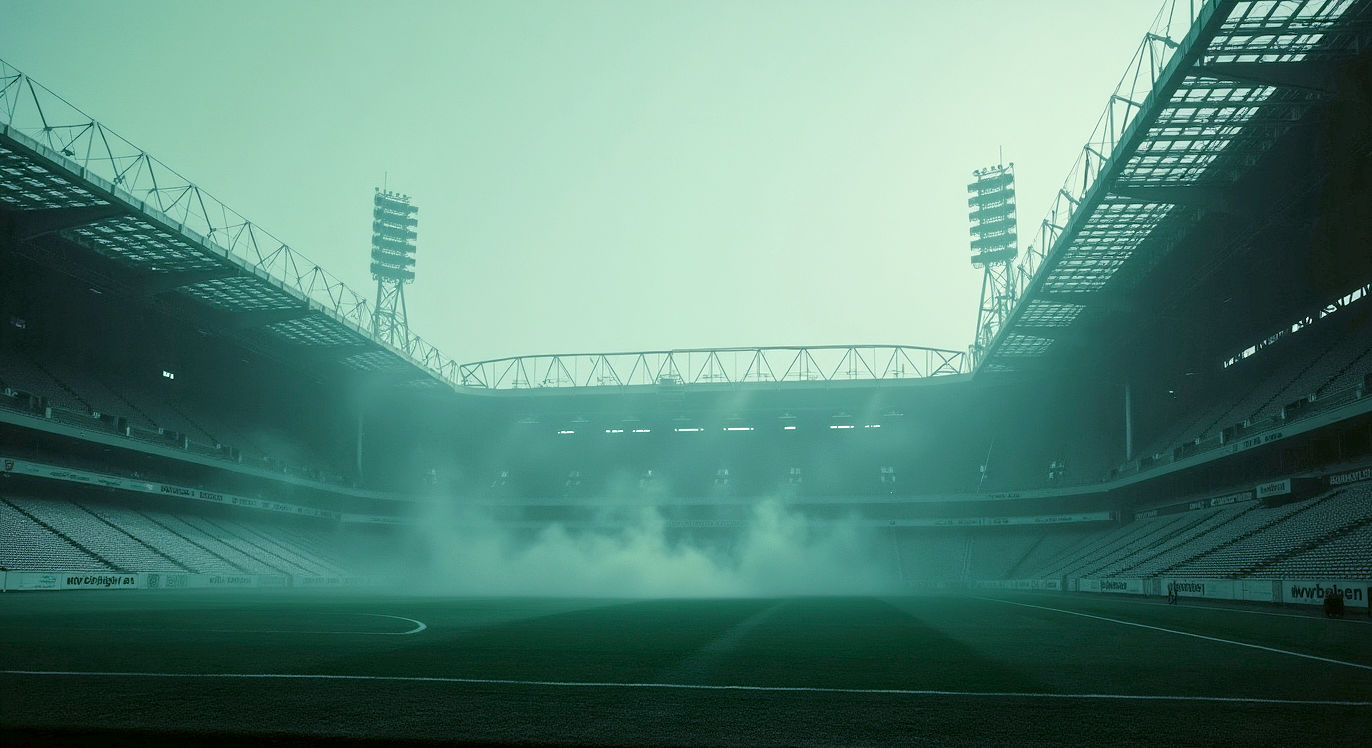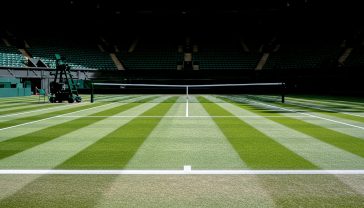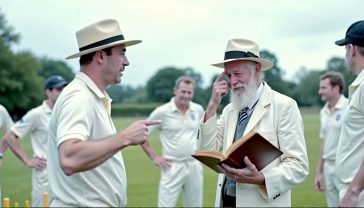Echoes of the Roar: A Grand Tour of Britain’s Lost Sporting Cathedrals
A journey into the heart of Britain’s vanished sporting arenas. Explore the history, the glory, and the ghosts of legendary grounds we’ve loved and lost.

This post may contain affiliate links. If you make a purchase through these links, we may earn a commission at no additional cost to you.
Have you ever walked down a quiet residential street and felt a strange buzz in the air? A faint, ghostly echo of a roar from thousands of people? Chances are, you might be standing on what was once hallowed ground. Britain is dotted with the ghosts of legendary sporting venues—places that were once the heart and soul of their communities, where history was made and heroes were born.
These weren’t just lumps of concrete and steel. They were cathedrals of passion, theatres of dreams. They were places like the old Wembley, with its magical Twin Towers, or Highbury, Arsenal’s grand old home. But times change. Safety rules get stricter, clubs get richer, and the old makes way for the new. Join us on a tour of these incredible lost arenas, as we explore why they were so special, why they had to go, and what legacy they’ve left behind.
The Cathedral of Football: Remembering the Old Wembley
Before the giant arch, there were the Twin Towers. For anyone who loved football, those two white towers were a symbol of everything the game meant. The original Wembley Stadium wasn’t just a stadium; it was the ultimate destination. Reaching a cup final there was the pinnacle of a player’s career. It was, quite simply, the most famous football ground in the world.
Built for the British Empire Exhibition in 1923, it was meant to be knocked down straight after. Thank goodness it wasn’t. Its very first event, the FA Cup Final between Bolton Wanderers and West Ham United, became the stuff of legend.
The Twin Towers and the ‘White Horse Final’
The stadium was designed for 125,000 people, but on that first day, an estimated 300,000 fans turned up. They spilled onto the pitch, a massive sea of people. The game looked impossible to play. That was until a policeman on a white horse, named Billie, calmly trotted onto the field and gently nudged the crowd back to the sides. The match, which Bolton won 2-0, was forever known as the ‘White Horse Final’. Wembley had announced its arrival in the most chaotic, memorable way possible.
For the next 77 years, it was the home of English football. It hosted the FA Cup Final every year, a national event that brought the country to a standstill. The long walk up the 39 steps to the Royal Box to collect the trophy was a journey every schoolkid dreamed of making. It was where Stanley Matthews, at the age of 38, finally won his FA Cup medal in the legendary ‘Matthews Final’ of 1953. It was where Sunderland, a second-division side, pulled off one of the biggest shocks ever by beating the mighty Leeds United in 1973.
1966 and All That
Of course, Wembley’s most famous hour came on 30th July 1966. It was the World Cup Final, England versus West Germany. The entire nation held its breath. The noise was deafening as Bobby Moore’s team won 4-2. The image of Moore, held aloft by his teammates, lifting the Jules Rimet trophy with the Twin Towers in the background, is perhaps the most iconic in English sporting history. It was a moment of pure, unadulterated joy, and it happened right there.
But Wembley wasn’t just for football. It hosted the 1948 Olympic Games, speedway championships, and epic boxing matches featuring British hero Henry Cooper. In 1985, it was the stage for Live Aid, where Queen produced one of the greatest live performances ever seen. It was a place where national moments happened.
The End of an Era
By the 1990s, the old stadium was showing its age. The facilities were dated, and many seats had a poor view. The decision was made to build a new, state-of-the-art national stadium. In 2000, the last competitive match was played, and in 2003, the famous Twin Towers were finally demolished. Many people felt a huge sense of loss. The new Wembley is a magnificent arena, but for a whole generation, it will never quite capture the magic of the original.
From Football Grounds to Luxury Flats: The Homes We’ve Lost
Wembley may be the most famous, but countless other clubs have said goodbye to their spiritual homes. These grounds were often crammed into tight-knit terraced streets, making the matchday experience feel like a core part of the local community.
Highbury: Arsenal’s Marble Halls
If Wembley was the cathedral, Highbury was a palace. Opened in 1913, Arsenal Stadium, better known as Highbury, was one of the grandest grounds in the country. Its East and West Stands were stunning examples of Art Deco architecture, built in the 1930s. It was famous for its pristine, small pitch, known as ‘the carpet’, and the legendary Clock End.
Inside, the famous marble halls gave the club an air of class and history. Highbury was home to generations of Arsenal legends, from Cliff Bastin to Thierry Henry. It was here that manager Herbert Chapman revolutionised football tactics in the 1930s. It was here that Arsenal clinched the league title against Liverpool with the very last kick of the season in 1989, an unbelievable moment of drama. And it was here that the ‘Invincibles’ team went an entire league season unbeaten in 2003-04.
But Highbury was small. Its capacity of just over 38,000 held the club back financially. So, in 2006, Arsenal moved just down the road to the 60,000-seater Emirates Stadium. The old ground wasn’t knocked down, though. It was cleverly converted into luxury apartments, with the beautiful Art Deco stands preserved. The pitch is now a garden for residents. A ghost of a football ground, hiding in plain sight.
Upton Park: More Than Just a Ground for West Ham
For West Ham United fans, the Boleyn Ground, universally known as Upton Park, was everything. It was an intimidating, noisy, and passionate place, famous for its incredible atmosphere. For over 100 years, it was the club’s fortress in the East End of London.
The ground was named after a house that stood on the site, which was rumoured to have been a home of Anne Boleyn. This was the turf graced by England’s three World Cup heroes: Bobby Moore, Geoff Hurst, and Martin Peters. Upton Park was where the ‘Academy of Football’ was born, a philosophy of playing attractive, passing football. It was the scene of famous European nights under the floodlights and epic London derbies.
Fans were incredibly close to the pitch, making the roar of the crowd feel like it was right on top of the players. But like many old grounds, it was hemmed in by houses and couldn’t be expanded. In 2016, West Ham moved to the massive London Stadium, the former Olympic stadium in Stratford. The farewell to Upton Park was emotional, a raw and tearful goodbye to a place that held a million memories. Today, the site is a housing development, its name the only clue to the history made there.
Maine Road: City’s Sprawling Old Home
For 80 years, Manchester City played at Maine Road in the Moss Side area of the city. At its peak, it was a huge stadium, holding over 84,000 people for an FA Cup tie in 1934—a record for an English club ground that still stands.
It was known as the ‘Wembley of the North’. But it was a strange, sprawling place. The stands were all different shapes and sizes, built at different times. The most famous was the Kippax, a huge terrace that ran the length of the pitch. When it was converted to seating, it became the tallest stand in the country.
Maine Road saw City’s glory days in the late 1960s and their dramatic decline into the third tier of English football in the 1990s. The atmosphere could be electric, but by the early 2000s, it was crumbling. When the Commonwealth Games came to Manchester in 2002, a brand-new stadium was built. City moved there in 2003, and Maine Road was demolished. Like Upton Park, it’s now a housing estate, its history almost completely erased from the landscape.
Roker Park: The Legendary ‘Roker Roar’
Up in the North East, Sunderland’s old home, Roker Park, was another ground famous for its noise. The ‘Roker Roar’ was legendary, a thunderous wave of sound that would sweep down from the terraces and intimidate visiting teams. It was right next to the North Sea, and the wind would often whip through the stadium, making games a real battle.
Roker Park was Sunderland’s home for 99 years. It was a classic, traditional ground with a huge terrace called the Fulwell End. It was there in 1997 that the club said its goodbyes before moving to the modern Stadium of Light. The closing ceremony was incredibly moving, with a brass band playing as former players took one last walk on the pitch. The final kick at the ground was taken by Charlie Hurley, one of the club’s greatest-ever players. The site is now, you guessed it, a housing estate.
Beyond the Beautiful Game: London’s Lost Arenas
It’s not just football grounds that have vanished. Some of Britain’s greatest multi-sport venues have also disappeared.
White City Stadium: An Olympic Ghost
Built in just 10 months for the 1908 London Olympics, White City was a marvel of its time. It could hold nearly 70,000 people and had a running track, a cycling track, and a swimming pool all in the middle of the pitch. It was here that the marathon distance was set at 26 miles and 385 yards, so the race could finish in front of the Royal Box.
After the Olympics, it became a jack-of-all-trades. It hosted athletics, greyhound racing, speedway, and even a match in the 1966 World Cup. It was the home of the famous greyhound race, the English Greyhound Derby. But its huge size and lack of a permanent tenant meant it struggled to survive. It was a vast, echoing arena from a different time. It was knocked down in 1985 to make way for new offices for the BBC.
Harringay Stadium: Where Speed Was King
Not far away in North London was another lost giant: Harringay Stadium. For over 50 years, it was one of the premier venues in the world for greyhound racing and speedway. The noise of the speedway bikes, with no brakes and burning methanol fuel, was deafening. It was a thrilling, dangerous sport, and Harringay’s team, the Harringay Racers, were one of the best.
The stadium also hosted boxing and stock car racing. But as tastes in entertainment changed, crowds dwindled. The stadium closed in 1987 and was demolished. A retail park now stands in its place, with shoppers probably unaware of the high-speed drama that once unfolded beneath their feet.
Why Do Our Sporting Homes Vanish?
So why do these beloved places disappear? It’s usually a mix of money, safety, and ambition.
Safety, Seats, and the Taylor Report
For many years, football grounds were mostly standing terraces. They were cheap, and you could pack huge numbers of people in. But they could also be dangerous. The tragic Hillsborough disaster in 1989, where 97 Liverpool fans lost their lives, changed everything.
The subsequent investigation, called the Taylor Report, recommended that all major stadiums become all-seater. This had a huge impact. Terraces like the Kippax at Maine Road or the Fulwell End at Roker Park had to go. For many clubs, converting their old grounds was difficult and expensive. It was often easier and cheaper in the long run to start again somewhere new.
The Price of Progress
Modern football is big business. Old grounds, often stuck in the middle of residential areas, simply didn’t have the space for the things a modern club needs: corporate boxes, large club shops, restaurants, and car parks. A new, purpose-built stadium on the edge of town offers a blank canvas.
These new stadiums can generate much more money, which helps clubs compete for the best players. The moves made by Arsenal, Manchester City, and West Ham have helped turn them into financial powerhouses. But for many fans, something has been lost along the way—a connection to a place, a community, and a history.
Gone But Not Forgotten: The Enduring Legacy of Lost Venues
Even though the physical buildings are gone, these places live on. They live on in the memories of the fans who went there week in, week out. They live on in old photos, TV clips, and the stories passed down from grandparents to grandchildren.
A club’s identity is shaped by its home. The class of Highbury, the grit of Upton Park, the roar of Roker Park—these things became part of the DNA of the clubs that played there. When a club moves, it can feel like a part of its soul has been left behind. The atmosphere in modern, bowl-shaped stadiums is often criticised for being less intense than in the old grounds where fans were right on top of the action.
Conclusion: More Than Bricks and Mortar
A sporting venue is never just a building. It’s a landmark, a meeting place, and a keeper of memories. It’s a constant in an ever-changing world. The legendary venues we’ve lost were woven into the fabric of their towns and cities. They witnessed triumph and disaster, joy and heartbreak. They were where communities came together to share something they loved.
While the new stadiums are safer, more comfortable, and more profitable, they can never fully replace what was lost. The ghosts of these old grounds will forever haunt our sporting landscape, their roars echoing down the years as a reminder of a passion that can never be demolished.
Further Reading
For those wishing to delve deeper into the history of Britain’s sporting architecture and lost grounds, the following resources are highly recommended:
- “The Football Grounds of England” by Simon Inglis: An authoritative and beautifully researched book on the topic.
- The National Football Museum: Offers extensive exhibits and archives on the history of the game’s most famous venues. (www.nationalfootballmuseum.com)
- “Played in Britain” by Historic England: A series of books and an online project celebrating the architectural heritage of British sport. (historicengland.org.uk)






